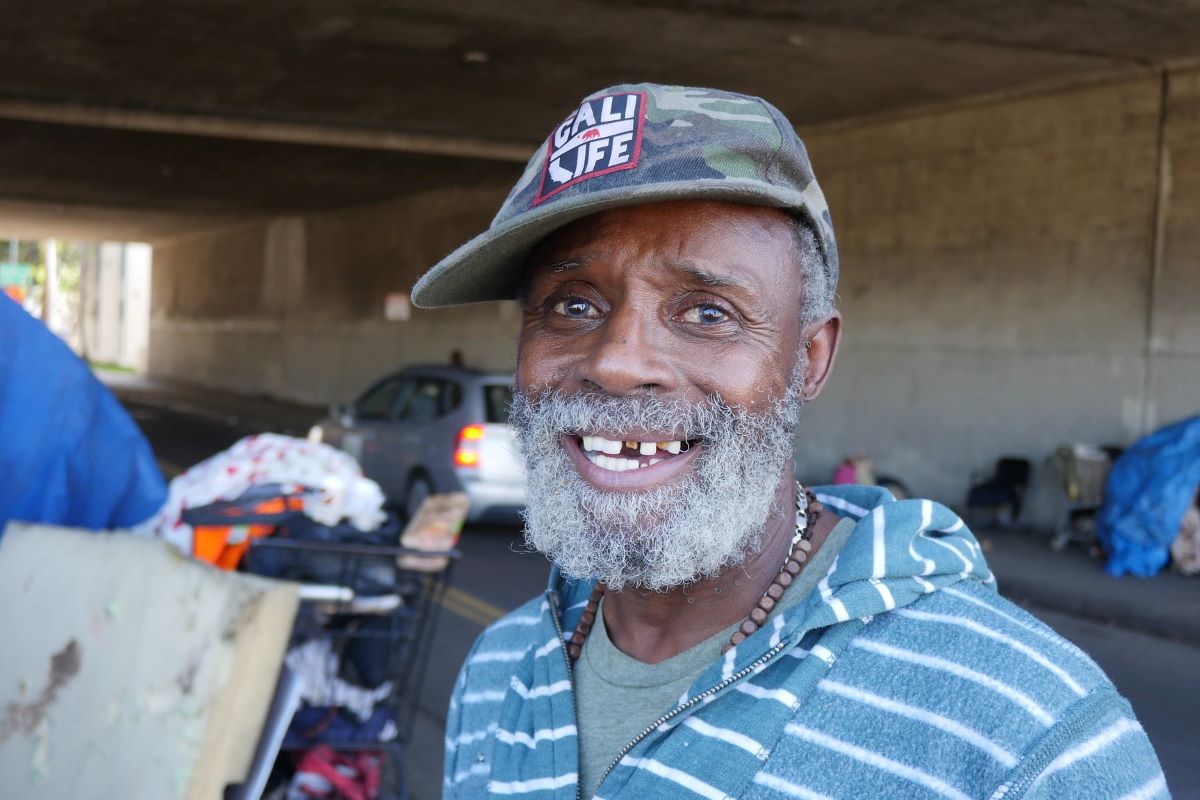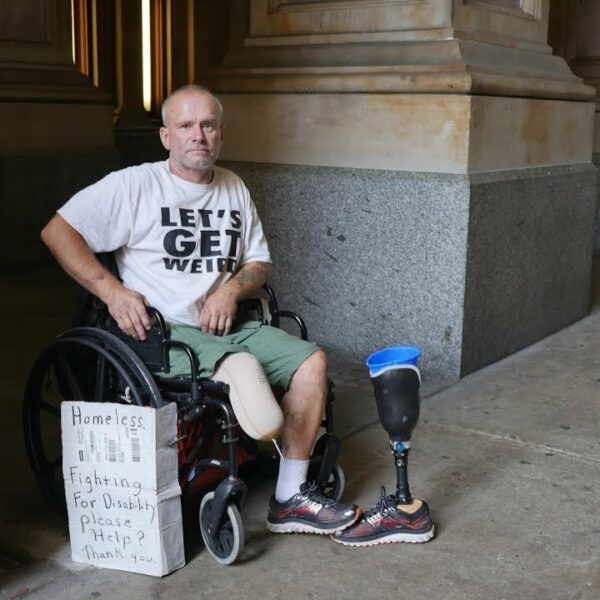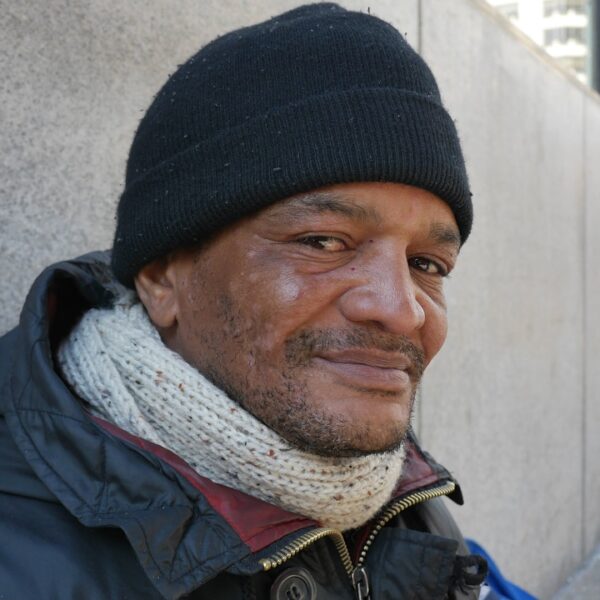Award Winning Periodontist Dr. Stephen Brown Gives Exclusive Interview
The world views us through our smiles. We dole them out at times unwittingly, mimicking the smiles of strangers passing by. We take delight when we gaze upon the faces of children, and research suggests this is partly because children smile an average of 400 times each day. A smile is a universal conversation introducing us to the world without uttering a word.
But what happens when homelessness gives way to hopelessness and there’s nothing left to smile about? What happens when decay spreads from the outside in, when the foods we must eat to stay alive are killing us internally? What happens when poor oral hygiene winds up in the top ten most dire issues homeless people must endure?
We sat down with the #1 ranked periodontist in Philadelphia for an exclusive Invisible People interview about the hazards of homelessness on oral health. Dr. Stephen Brown of the Perio Group has won several awards including “Top Dentist in Philadelphia”, a prestigious honor now bestowed upon his practice 10 times. He is also a noted community leader who is heavily involved in teaching future dental clinicians at Temple University, the University of Pennsylvania, and the Albert Einstein Medical Center. When asked to describe the nation’s response to the homeless oral hygiene crisis, he had this to say:
“It’s disgraceful.”
Throughout this interview, there were several major points covered. For readability purposes, that information has been divided into segments and supported by statistical data.
“In the United States of America, we should be doing a much better job in being able to not only provide for the homeless in terms of oral health but in providing for them in terms of them not having to sleep on the streets.” ~ Dr. Stephen Brown
Oral Health and Malnutrition
At the root of most dental disease is a poor diet. This poses a unique challenge to the homeless population since they often have little or no choice regarding the types of food they consume. The National Health Care for the Homeless Council released a report in 2008 detailing the nutrient inadequacy of food distributed to shelter-fed children. The meals were often high in sugar and carbohydrates (including fruits canned in syrup) adding up to a total of three times more sugar and fat than their non-homeless peers. Bear in mind that this survey only delivered numbers for children in shelters, noting that homeless people in hotels or living on the streets had even poorer diets comparatively.
Invisible People: Are you aware of the unique problems that homeless people face regarding oral hygiene?
Dr. Brown: I don’t know the exact statistics, but I imagine they are very troubling. If one is on the streets and not getting a very good diet, that’s going to be reflected in the teeth. The diet plays an extremely important role in the health of the gums and teeth. Very specifically, foods that are high in carbohydrates contain a tremendous amount of sugar and consequently bacteria, which cause gum disease. Dental decay thrives on those types of environments. So, someone who does not have an adequate diet because they are eating high carbohydrate foods is much more prone to periodontal disease and to dental caries.
Sadly, many homeless people I have seen are badly in need of dental care. If the need continues to remain unfilled and their teeth fall out or decay, then they cannot chew and masticate their food in such a way that they’re going to get the maximum nourishment out of it. So consequently, it’s a vicious cycle.
The Link between Oral Health and Systematic Health
Many necessary dental procedures are categorized as “cosmetic” when in reality, poor oral health can wreak havoc on the body and immune system. Over the years, there’s been a shift in this perception, particularly within the medical community. We, as a nation, are just coming to grips with the fact that oral health goes hand-in-hand with systematic health. Yet regardless of recent revelations, the following statistics still apply:
- 98% of shelter staff members cited dental care among the most significant unfilled needs of the homeless population.
- Homeless Americans are 12 times more likely to be stricken with oral health issues
- 96% of homeless children require dental care they’re not receiving
We ran these numbers past Dr. Brown. Here was his response.
Dr. Brown: I am aware that homeless shelters don’t offer dental care. Having taught in three institutions, none of the young dentists that I know are actually treating the homeless population. I think it’s a very underserved population and a population which we could do a lot to help.
Oral Health has something to do with systemic health. We know that for a fact. There are many life-threatening diseases that are associated with dental disease. For example, we know that it’s related to cardiovascular disease. We know that it’s related to pulmonary disease. We know it’s related to diabetes. And we know it’s related to a host of other life-threatening diseases. So poor dental health equals poor general health.
The Benefits of a Winning Smile
Invisible People: A great deal of light has been shed on our radiant smiles in recent years. The link between oral health and general health is well documented. But a winning smile goes further than that, doesn’t it? A winning smile takes us places in society. It also plays a major role in self-esteem, an overlooked but valuable component of mental health.
Dr. Brown: Well, we greet each other with a smile. The smile is the entry point to each relationship. It’s probably the first thing that somebody notices when they meet somebody else. And when one does not have a winning smile, they are much less likely to be accepted in society, and they are much less likely to able to become gainfully employed.
Not only that, but also, as a result of that, an individual who has poor dental care, or has no teeth, or has only the remains of teeth, is more likely to be protective. They’re going to keep a hand over their mouth and they’re not going to smile. They’re going to look downward. That’s common in all people who have poor dental health and whose smile has been decimated for any reason whatsoever. What many fail to realize, is that these gestures hurt us in social circumstances and can further hinder a homeless person’s chances of bouncing back.
Statistics support these statements.
CareerBuilder asked 2,500 hiring managers about body language and its role in landing coveted career positions. 38% shared a reluctant smile could hurt prospective job hunter’s chances. 21% said touching the face could also cause them to pass over an applicant.
Homeless people already face looming obstacles when they attempt to apply for jobs. In this vicious cycle, the more one loses, the less they have to gain.
Oral Health and the Future
Dr. Brown: We need strategies for effectively dealing with the bacteria that cause both gum disease and dental decay. But we also need strategies for effectively dealing with decay in our society. And if we could get more people access to care, we could help. That’s a huge part of the problem, particularly within the homeless population where they have limited if any access to dental care. As I said earlier, I feel strongly that there ought to be encouragement amongst young dental students to go out into the homeless shelters and maybe provide some care on an ongoing basis. This would be a start. But it shouldn’t end there.
Are you familiar with Maslow’s Hierarchy of Needs? Shelter is among the most basic. To put it simply, homeless people deserve beautiful smiles. They also deserve a reason to smile. We must first work on homeless people not being homeless anymore.
Today, Invisible People learned a lot about lasers and non-invasive surgery. The medical field has found inventive ways to perform operations without cutting, stitching, and otherwise invasively harming the patient. With such technological advancement underway, we must now strive to find inventive ways to solve homelessness.
Remember to contact your legislators and community leaders. Tell them we need funding and outreach programs so that the homeless population can access nutrient-rich food as well as dental, medical, and other basic needs. That’s the only way to fix these broken smiles.













